This month, we are featuring a guest Look Back at SoHo Broadway article, courtesy of our neighbors at NoHo BID, where this feature was originally published. The Initiative extends special thanks to Chandler Forsythe for shedding light on this often-overlooked aspect of our neighborhoods’ history.
For much of the 20th Century, Lafayette Street was home to New York City’s Gasoline Alley. Today the neighborhood has been almost entirely lost, but in its heyday from roughly 1960 to 1990, this small strip was home to dozens of gas stations, auto body shops, low-slung parking garages, and other similar uses. Gasoline Alley grew organically, and was lost slowly, piece by piece as SoHo and NoHo became more desirable places to be. Now, it’s almost all gone, and there’s little in the way of documentation of this historical time in the neighborhood.
Through the meticulous sourcing of historic documents, Bromley maps, and photographs, we’ve pieced together the intriguing history of Gasoline Alley. When it was around, it was hardly noteworthy, just a cluster of gas stations many people never paid much mind to, but now that it’s largely vanished, the neighborhood has lost a piece of history that extends back a century. The NoHo BID is a firm believer in our neighborhood’s history, and we’re excited to tell a story that’s hardly been told. The cast of characters that led to the creation of this small community includes some of the most legendary figures in New York City history, including Robert Moses and the subway itself.
In the 1890s, work began on the City’s subway system by the Interborough Rapid Transit Company. The dense blocks of Lower Manhattan were not neatly aligned for construction of the subway, and it was ultimately decided to slice straight through NoHo. At this time, Lafayette Place ended at Great Jones Street and is narrower than it was today. The construction of the subway was facilitated by cutting straight through these blocks so Lafayette would meet with Elm Street, which ended at Prince Street a few blocks south. Unfortunately, they didn’t neatly meet, and Lafayette had to turn at a slight angle to meet the road. The photo on the left below, courtesy of the IRT, is taken from Great Jones Street, looking south down the newly extended Lafayette Street. We’ve also added in a map showing where Lafayette Street cut through blocks with a black line on the above right map. This section of track would ultimately become the very first subway line in operation in NYC, home to today’s 4, 5, and 6 trains.
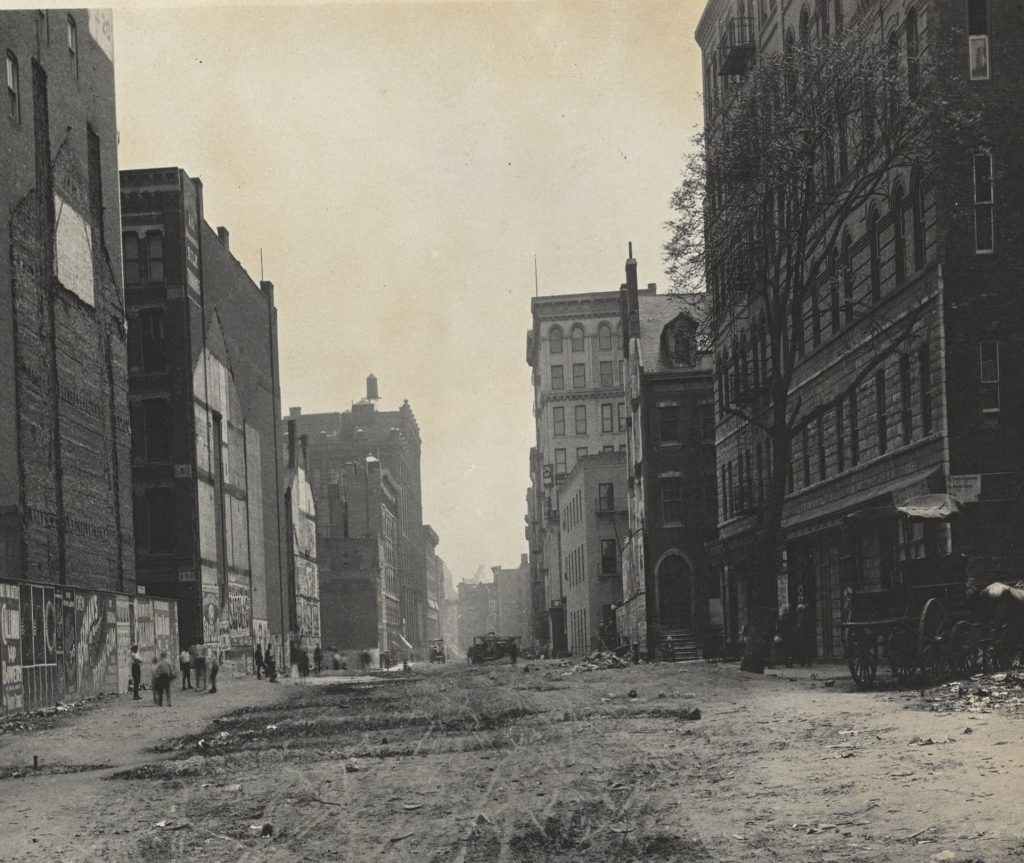
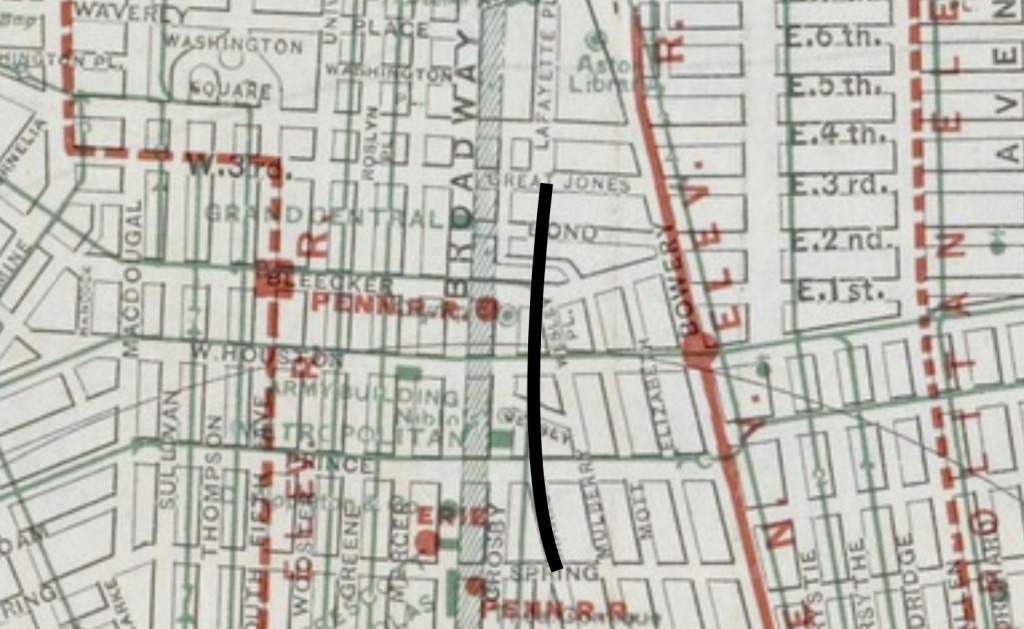
This road construction and widening created many irregularly sized lots that lined Lafayette Street, with some as narrow as a few feet wide. These strangely shaped lots were a challenge to their owners, and some remained vacant as late as the 1940s. However, they quickly began to be used to service an exciting new technology, the automobile. While these small lots were too small to build in the industrial loft style that has overtaken the neighborhood, they were perfect for small structures like gas stations and service centers, visible in the center and right photos below. By the 1930s, Lafayette Street between Astor Place and Spring Street was home to dozens of car-oriented businesses.
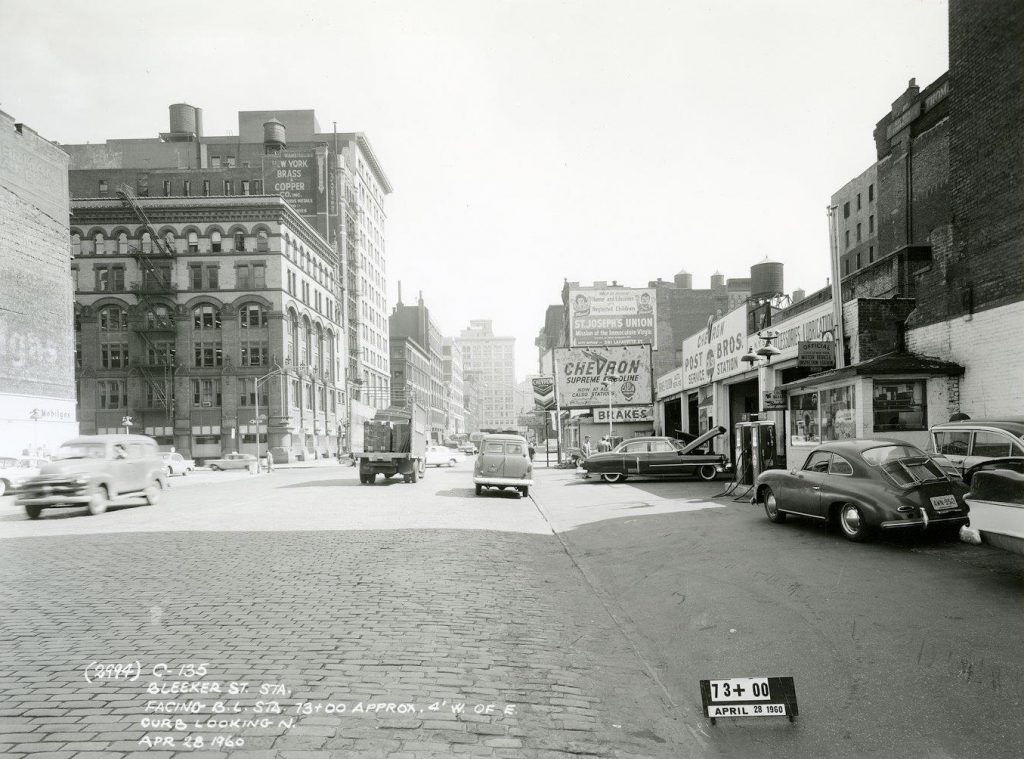
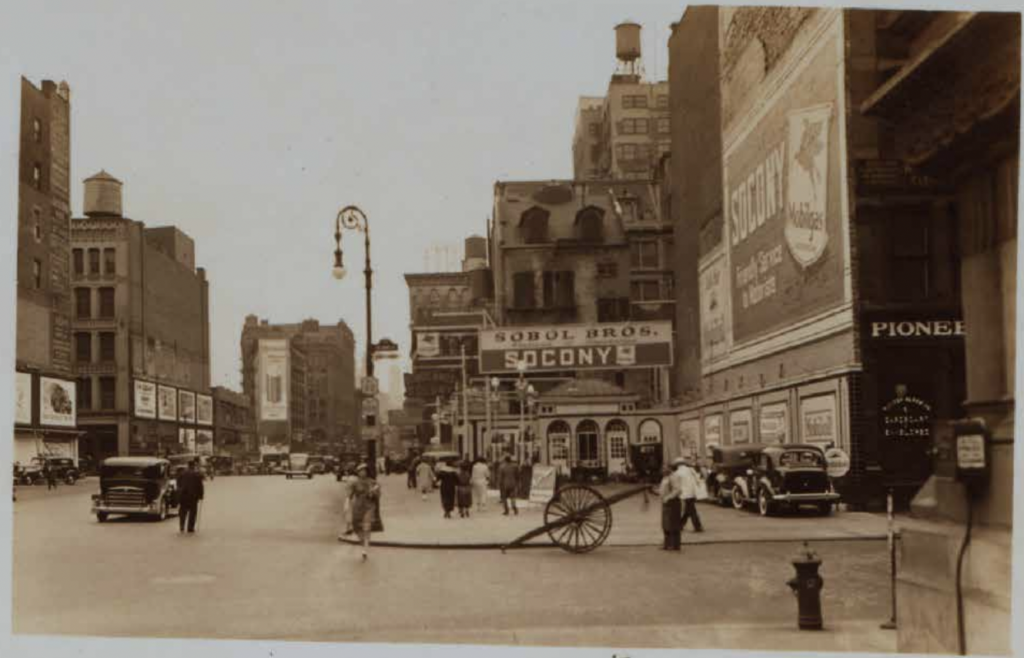
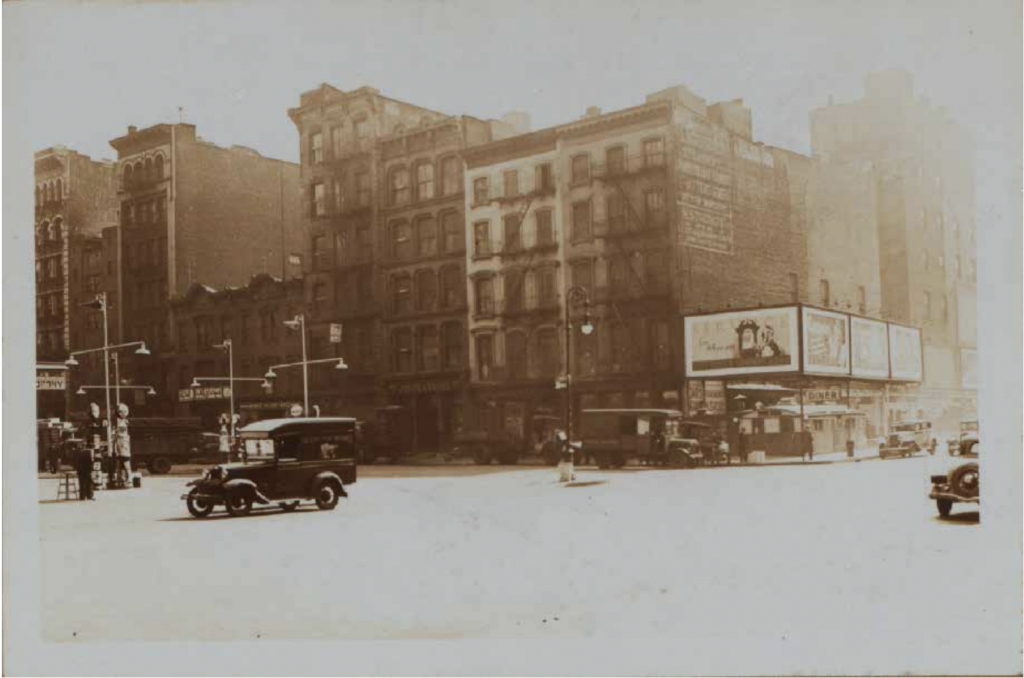
This trend was only reinforced by the repeated widening of Houston Street. At the turn of the century, Houston Street was another standard crosstown route, and would have looked similar to modern day Bleecker Street in scale. In the 1930s, the street was roughly doubled in width during construction of the IND Sixth Avenue Subway Line.
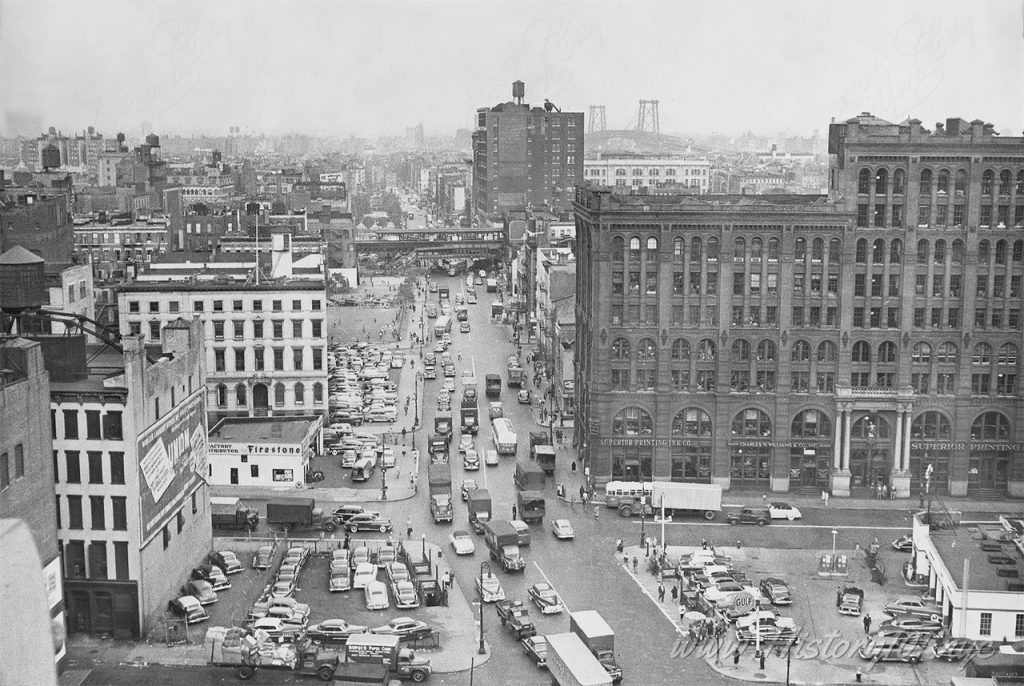
However, Robert Moses had his own set of plans for the road to become more high-traffic. Houston Street sat idle for years, while property owners awaited action from city government. During these in-between years, auto body shops, parking lots, and car dealerships, all of which could be easily built and didn’t require significant capital expenditure, began popping up on the vacant lots. You can see this nascent scene in photos. The photo at the top of this article is likely from sometime in the 1940s, and the one above is from 1952. You can really see the quick shift from vacancy to auto uses. Essentially, these buildings wouldn’t be a huge financial loss if they were soon torn down. In the 1950s, the street was widened yet again to accommodate car traffic, and to create a direct crosstown route from river to river.
After this construction, the now infamous Lower Manhattan Expressway (LOMEX) was planned by Robert Moses. Many property owners in the area expected the plan to go through, and doubled down on auto-centric uses. The LOMEX was set to run just below Spring Street, providing a direct connection from the Holland Tunnel to the Williamsburg Bridge, and was set to feature parking garages alongside the new roadway. Gasoline Alley was perfectly located to serve these car owners, and with this expectation in mind, Gasoline Alley was entering what would become its peak from the 1960s through the early 1990s. Ultimately, the LOMEX would be defeated by legendary urbanist Jane Jacobs and community opposition, but Gasoline Alley would continue on.
At its zenith, Gasoline Alley was known across NYC as the place to get car work done. Neighborhood icons, like the Whale of a Car Wash at Broadway and Houston, were open around the clock serving cabbies and residents from all over the City. You could come by at any time for a cheap car wash or detail, and had tons of options to choose from. Walk by Houston Street at call to prayer and you’d see Muslim cab drivers praying at gas stations before heading over to grab a bite from one of the local South Asian delis. Meanwhile, neighborhood joints like ACME and the Great Jones Cafe opened up to serve starving artists, waiting customers, and local workers from the shops alike.
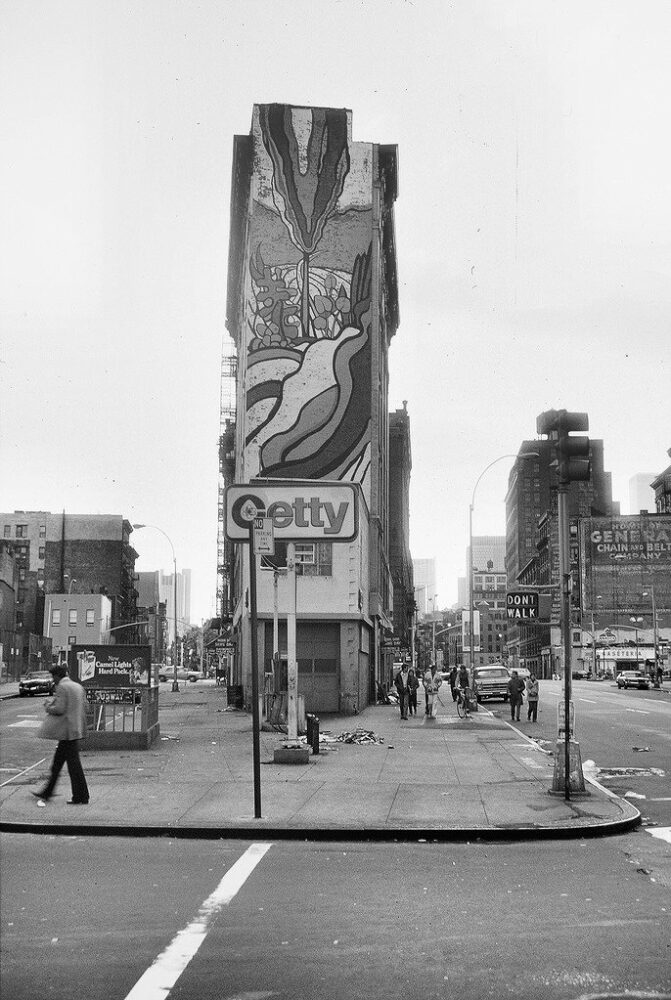
Take a stroll down Lafayette Street on a busy day in the 70s or 80s, and you might see everything from rappers tricking out their art cars, New Yorkers of all slices of life getting body work done, cab drivers meeting for shift change, NoHo artists, and more. If you got really lucky, you might have seen Billy Joel filming “Uptown Girl” in a neighborhood service shop. It was quite the scene, but unfortunately, the days were numbered. As New York City got ritzier and land values exploded throughout Manhattan, it spelled the beginning of the end for NoHo’s Gasoline Alley.
The closures began as a trickle in the mid-80s. At first, they brought about great neighborhood services, like the iconic fruit stand at Houston and Broadway, or a furniture shop at Lafayette and Bond. In 1994, Bowery Bar and Grill, often called B Bar, opened up in a former gas station at Bowery and East 4th. Around the same time, the tiny service station at the corner of Bleecker, Mulberry, and Lafayette was filled in and converted into a retail space. Not long after, the long-standing gas station at Bond and Lafayette was closed and turned into a tiny parking lot with massive billboards that fetched far more in income than the gas station that was previously on site.
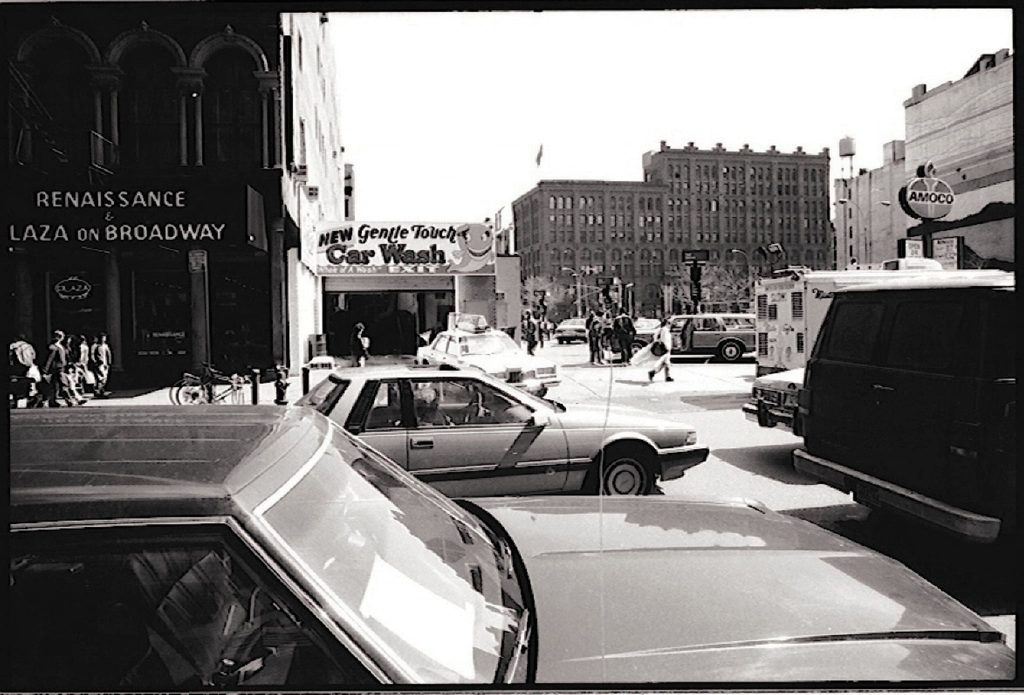
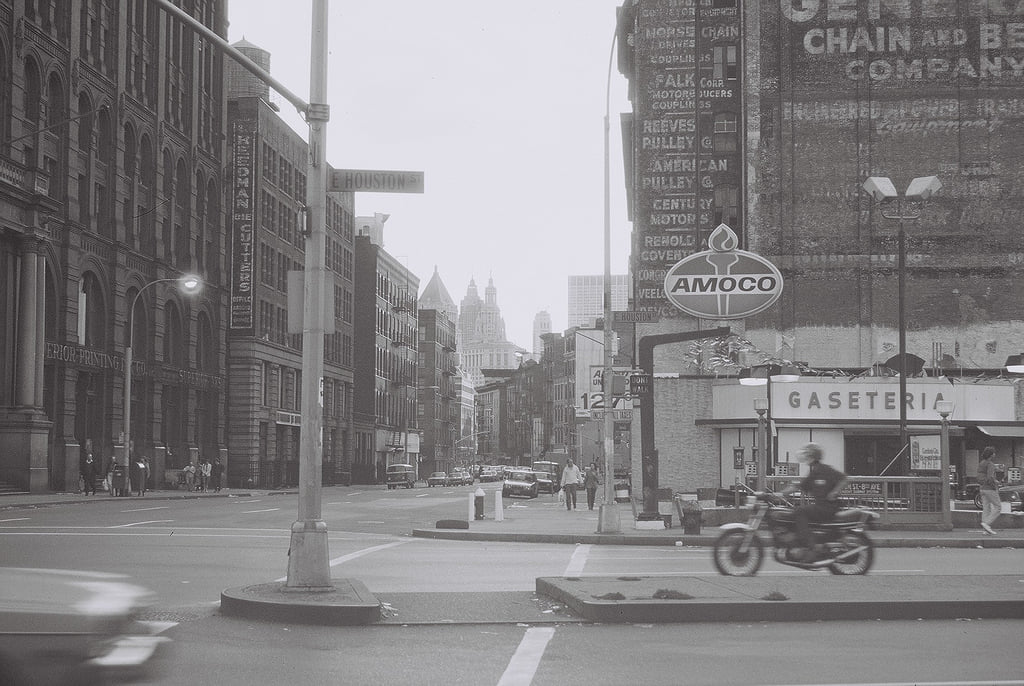
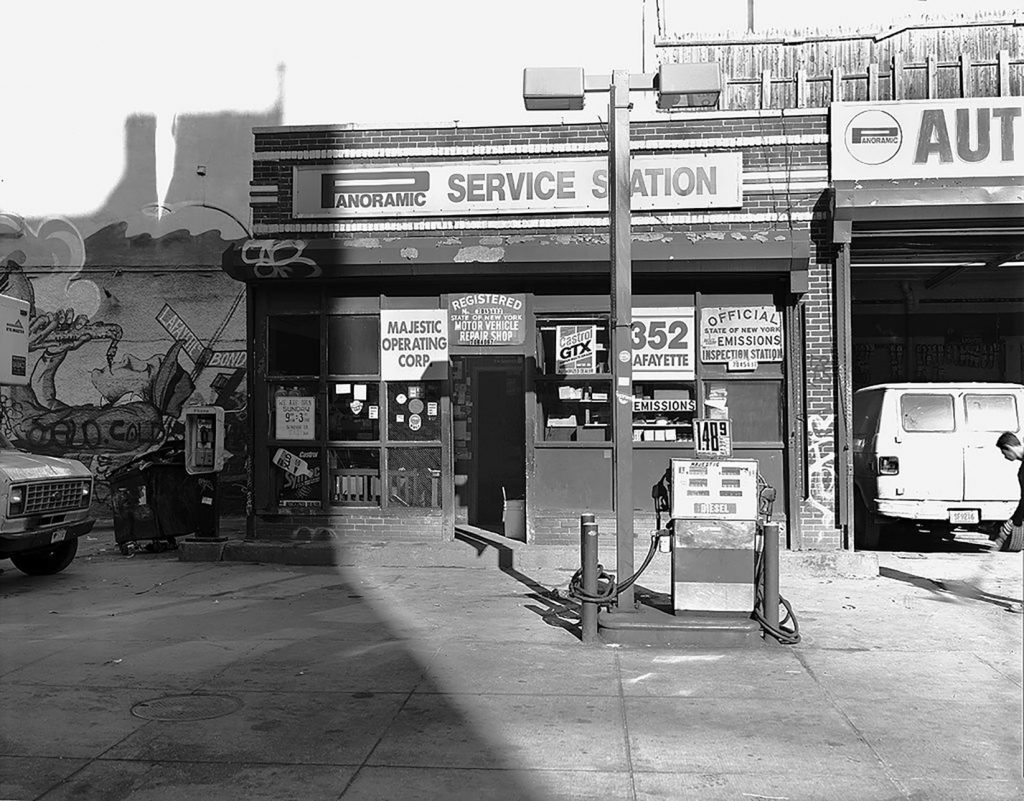
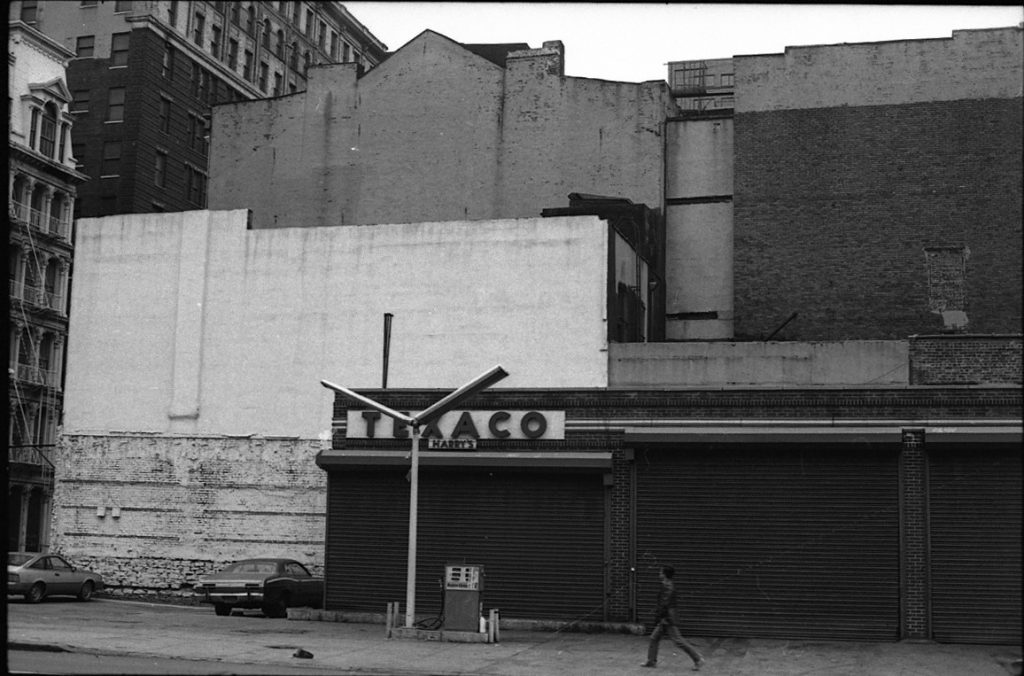
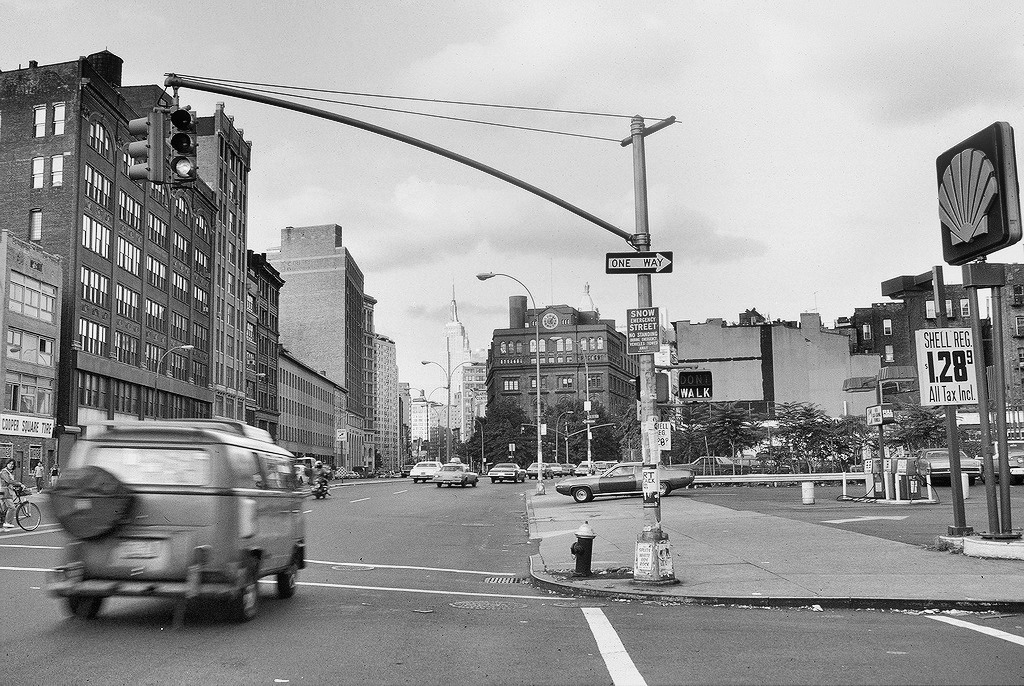
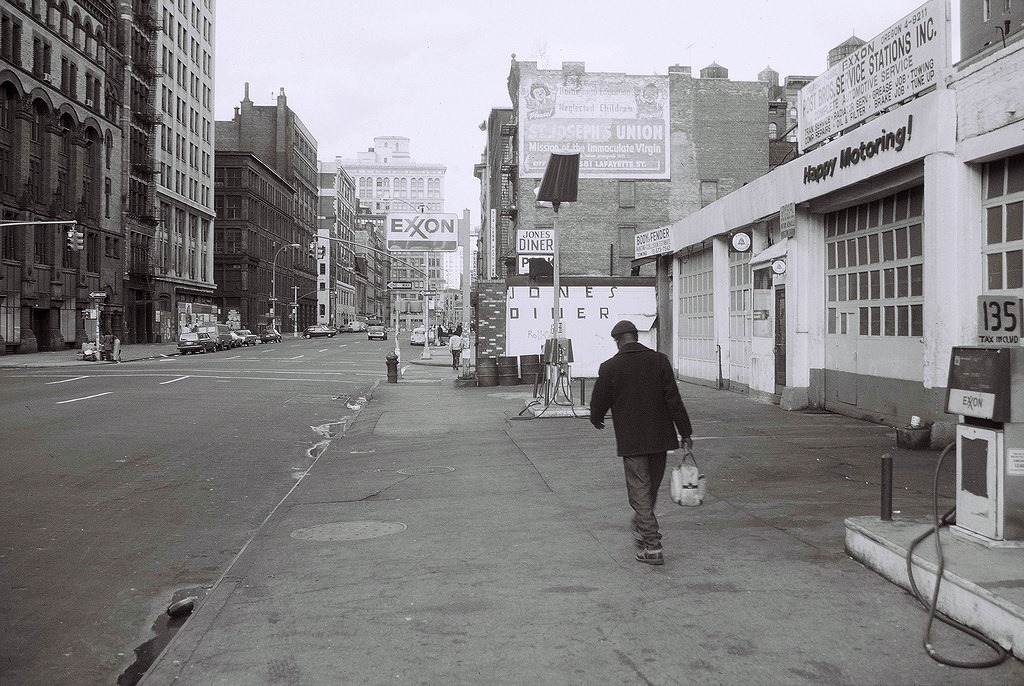
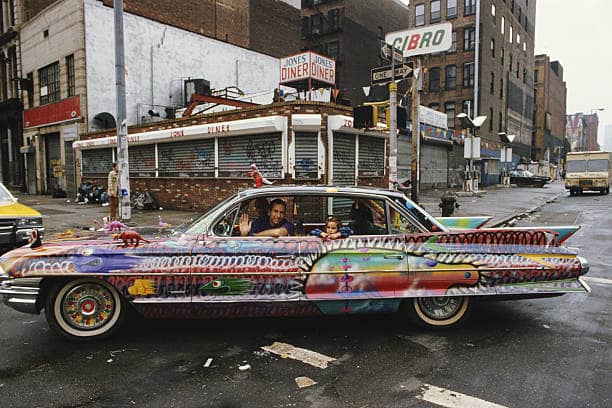
By 2004, the auto body shop at the corner of Lafayette and Houston, had closed. At the same time, the giant car wash that had called Broadway and Houston home for years was torn down to make way for a brand new office building. Throughout the 2000s, as Bond Street became one of the most desirable retail and residential addresses in Lower Manhattan, its numerous parking lots, etc. were built upon as well. Lafayette Street’s remnants held on a little longer, though now you’ll find high end boutiques, luxury condos, and retail where just a decade earlier you’d find cars.
While the vast majority of Gasoline Alley has been gone for over a decade, it was COVID that took out the last couple of remnants. Right up until March 2020, the intersection of Lafayette and Bleecker was still one of the shift-change spots in NYC, where cab drivers met from far flung corners of NYC to switch between the day and night shift drivers. However, as COVID raged on and cab drivers were devastated by a lack of ridership, this vestige was also lost. Across Houston Street in SoHo, Lahore Deli, once across the street from a prominent gas station, slung cheap fare geared towards cab drivers until 2022, when it finally closed for good. Nowadays, a single, small auto body shop on Great Jones Street and a smattering of parking lots and garages along Lafayette Street is all that remains of this once vibrant community.
It’s hard to even find much history of this now-lost neighborhood in NYC. NoHo’s Gasoline Alley Coffee carries the history of the neighborhood through its name, serving as one of the few clues as to what was once so prevalent here. Neville Ross, co-founder of Gasoline Alley Coffee, grew up working in his family business in South Africa, where he’s from. His family business, which is still operating today, offers car related services such as car washes, maintenance, repairs & equipment. As they planned to open it up, it was originally intended to be called “The Fueling Station.” However, when Nick, the other co-founder of Gasoline Alley Coffee, and Neville found Gasoline Alley Coffee’s original location here in NoHo, they renamed it Gasoline Alley Coffee as a nod to the neighborhood as well as an homage to Neville’s earlier years.
To help make it even easier to visualize the old Gasoline Alley in SoHo and NoHo, we’ve put together the map below of some of the former parts of this lost neighborhood. Click around to learn more about historic Gasoline Alley!